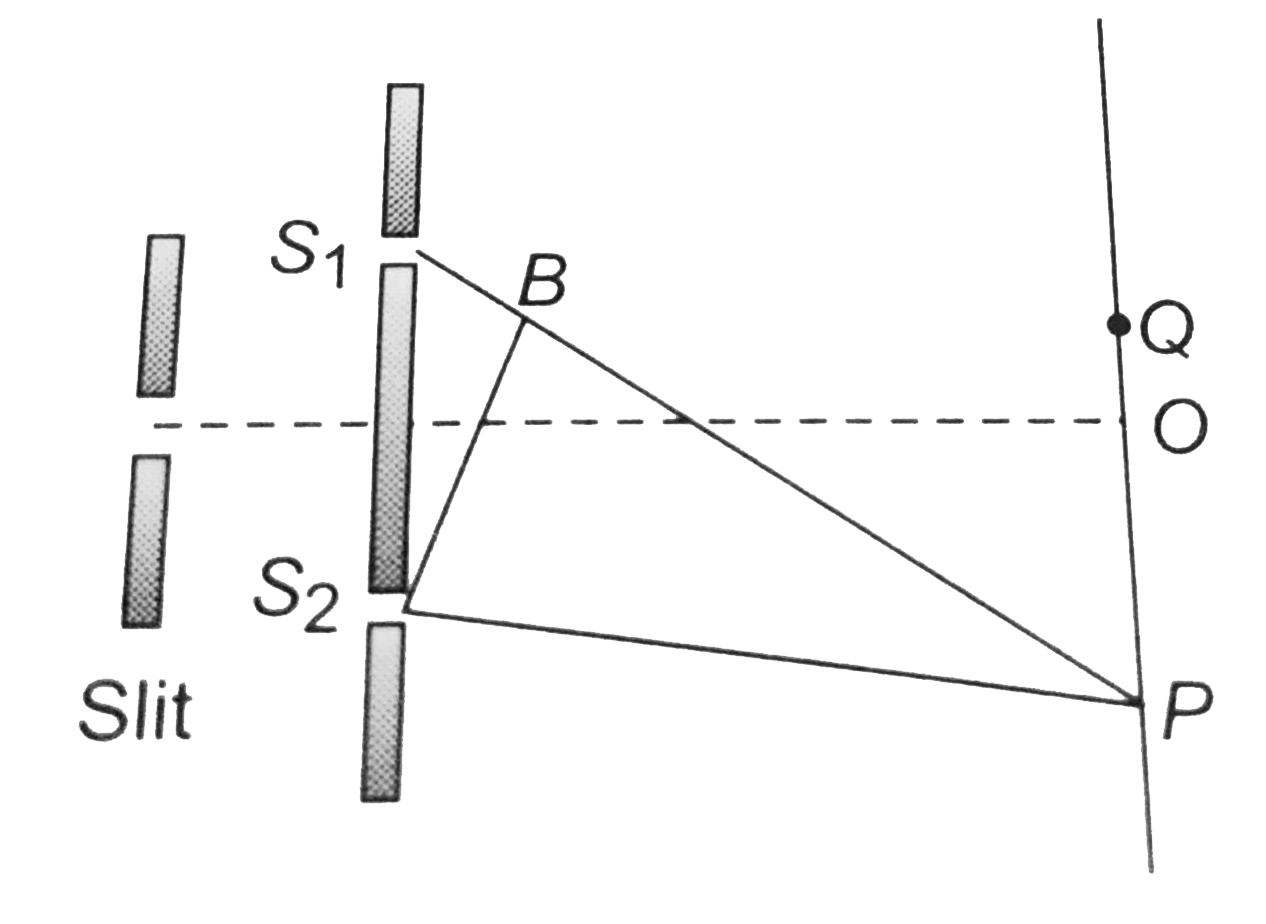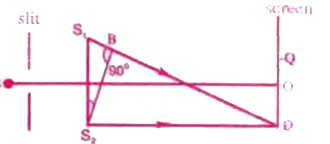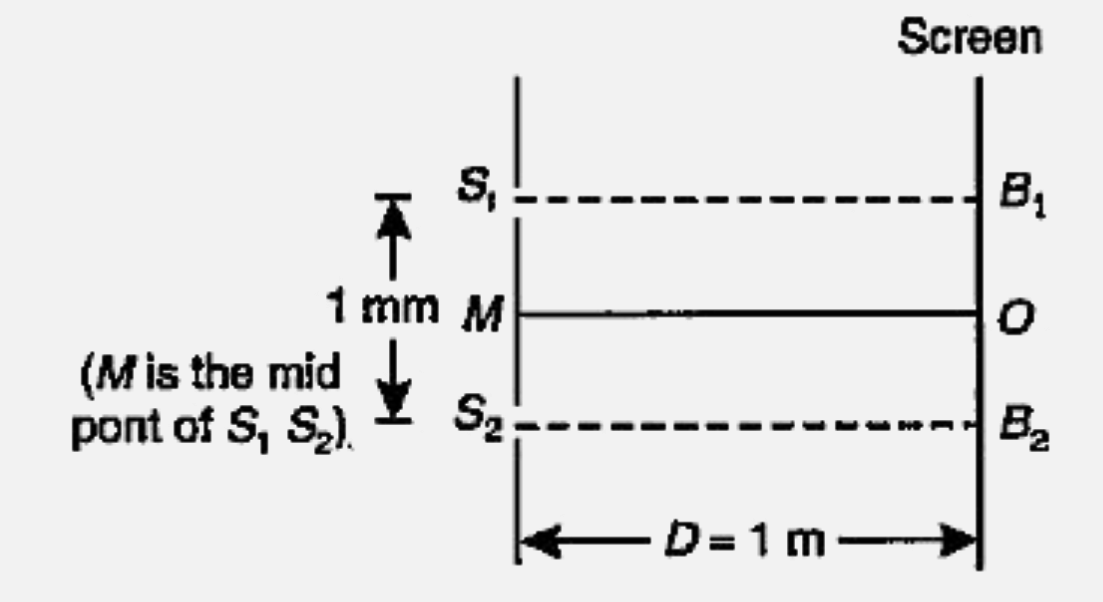The Young's double slit experiment has been shown in figure. Q is the position of the first bright fringe on the right side from O and P is the 11th bright fringe on the other side as measured from Q. if wavelength of the light used is 6000 Å, find the distance S1B.

6×10−6m
12×10−6m
18×10−6m
36×10−6m
The correct Answer is:A
At P path difference is 10λ
⇒dsin30∘=10λ
⇒d=20λ
Now S1B=dcos60∘
=20λ×12=6×10−6m

Topper's Solved these Questions
- WAVE OPTICSBook:MTG-WBJEEChapter:WAVE OPTICSExercise:WB JEE PREVIOUS YEARS QUESTION (MCQ.s)
Explore 9 Videos
- THERMODYNAMICSBook:MTG-WBJEEChapter:THERMODYNAMICSExercise:WB JEE Previous Years Questions
Explore 12 Videos
- WORK, POWER, ENERGYBook:MTG-WBJEEChapter:WORK, POWER, ENERGYExercise:EXERCISE (WB JEE Previous Years Questions) CATEGORY 1 : Single Option Correct Type (1 Mark)
Explore 3 Videos
Similar Questions
In the figure is shown Young's double slit experiment. Q is the position of the first bright fringe on the right side of O. P is the 11th bright fringe on the other side, as measured from Q. If the wavelength of the light used is 600nm. Then S1B will be equal to

View SolutionAs shown in the figure Q, above point O is the position of first bright fringe. On the other side of O, D is the position of 11th bright fringe with respect to Q. If the wavelength of light used is 6000A0 then the value of S1B will be

View Solution
Knowledge Check
In the figure is shown Young's double slit experiment. Q is the position of the first bright fringe on the right side of O. P is the 11th bright fringe on the other side, as measured from Q. If the wavelength of the light used is 600nm. Then S1B will be equal to
 A6×10−6mB6.6×10−6mC3.138×10−7mD3.144×10−7m
A6×10−6mB6.6×10−6mC3.138×10−7mD3.144×10−7mIn a Young's double slit experiment, fringe width equal to 1 mm is observed. Then the distance of the nearest bright fringe from the central fringe will be :
A1 mmB0.5mmC2mmDInsufficient data, cannot be determinedIn Young's double slit experiment, slits are arranged in such a way that besides central bright fringes, there is only one bright fringe on either side of it. Slit separation d for the given condition cannot be (if λ is wavelength of the light used):
AλBλ/2C2λD3λ/2
Following figure shows the positions of the first bright fringes B1andB2 on either side of the central bright fringe O in Young.s double slit experiment. Find the wavelength of monochromatic light used.

View SolutionIn Young's double slit experiment, slits are arranged in such a way that besides central bright fringes, there is only one bright fringe on either side of it. Slit separation d for the given condition cannot be (if λ is wavelength of the light used):
View SolutionIn a Young's double-slit experiment , the slits are separated by 0.28 mm and screen is placed 1.4 m away . The distance between the central bright fringe and the fourth bright fringe is measured to be 1.2 cm . Determine the wavelength of light used in the experiment .
View SolutionIn a Young's double-slit experiment , the slits are separated by 0.28 mm and screen is placed 1.4 m away . The distance between the central bright fringe and the fourth bright fringe is measured to be 1.2 cm . Determine the wavelength of light used in the experiment .
View SolutionIn Young's double slit experiment, the phase difference between the light waves producing the third bright fringe from the central fringe will be (λ=6000 Å)
View Solution
